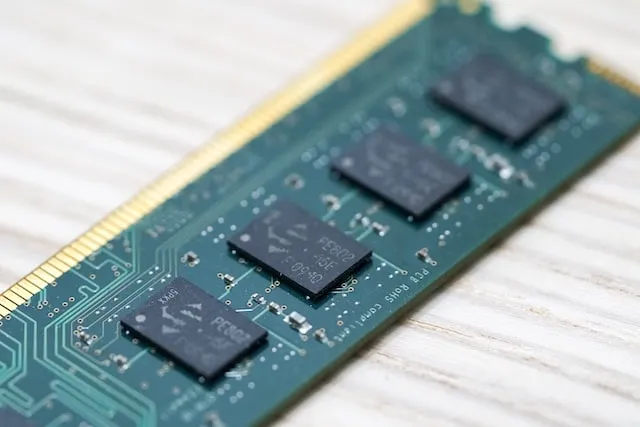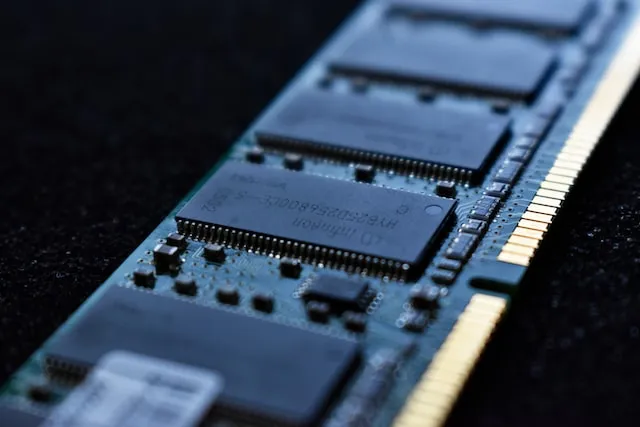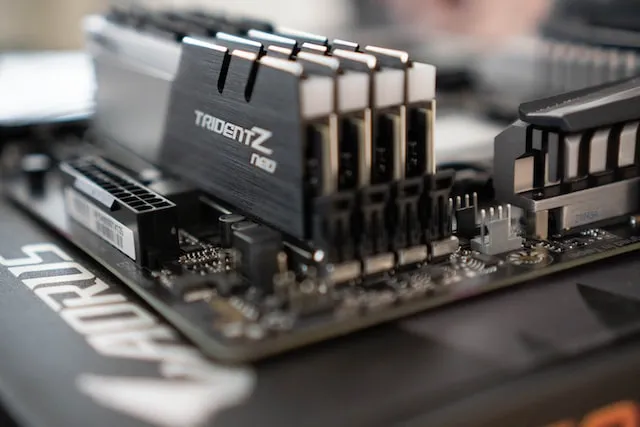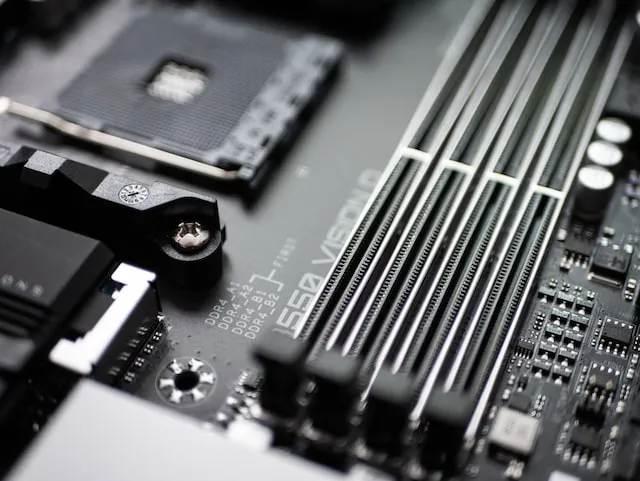What is RAM on a Computer? Types And Functions
RAM or Random Access Memory is one of the most important components in a computer. However, there are still many who question what is RAM on a computer and the functions that these components have.
RAM is one of the computer hardware related to the performance of a device. In order to get the right RAM for your device, of course you need to know the specifications and functions of RAM in more detail first.
Any device that has the capability in computing will need RAM. The need for this type of RAM is based on the work you do, this is to update the computer system that is used.
What is Ram on a Computer?

Random Access Memory (RAM) is a piece of hardware inside a computer that temporarily stores data and program instructions. RAM is memory that always needs power to keep data accessible. If the computer is turned off, the RAM cannot be accessed and the data in the RAM will be lost.
RAM greatly affects the performance of a computer, because its operation is related to the amount of memory contained in the programs being run. If the memory used to run the operating system and programs is insufficient, it will result in slow performance.
Read: What is Hardware? Definition, Functions, and Types
The more RAM memory the computer uses, the faster the information and software that can be loaded will be processed. Therefore, generally to run programs or applications that are heavy, it will require a device with large RAM.
Every computing device will generally need RAM in its components. Later the RAM will be an important component that affects the performance and performance of the device.
Actually, RAM is not only found in computers. But it can also be found on other devices. For example on smartphones, tablets, desktops, laptops, game systems, and so on. RAM itself also has various types although basically have the same purpose.
When viewed from the structure, RAM has a simple arrangement, namely:
Input Storage: At this stage, RAM will collect various data that you input (input) by using tools (for example via the keyboard).
Program Storage: In the program storage stage, RAM starts processing the instructions of all programs when they are about to be accessed.
Working Storage: After the data that you process has been processed, the working storage stage will store it.
Output Storage: This last stage will display processed data and distributed to output devices.
This brief description can be a brief explanation of how a RAM works. So you can have a general idea about the definition of what is ram on a computer.
A Brief History of RAM Development

As one of the important components in computer equipment, RAM has a very long history of development. RAM first appeared in 1947 designed in a practical form with a Williams tube (after the invention of Freddie Williams and Tom Kilburn).
This technology is the first random access memory that stores data in electrically charged spots on the face of a CRT tube. Then the form of RAM began to be developed into magnetic-core memory in the 1947-1970s.
Frederick Viehe developed the magnetic core memory design and patented the work. Magnetic core memory works through the use of small metal rings and wires connected to each ring.
Read: What is a Gateway and its Function on a Computer Network
This results in a data storage area on the ring that can be accessed at any time. Over time, RAM technology has become increasingly sophisticated. As you know today, for example, solid-state memory was invented in 1968 by Robert Dennard.
Then RAM, known specifically as dynamic random access memory (DRAM) was developed by semiconductor companies like Intel. The increasingly widespread use of RAM makes this technology even more important in the computing world.
Until now, RAM technology is still undergoing development and research. The goal is to get the best technology that can be used to support reliable computing systems in the future.
Functions of RAM on Computer

After knowing the explanation of what is ram on a computer, you also need to know about the functions that RAM has. In general, the function of RAM is as a place for temporary data storage.
Is the function of RAM in general only limited to that? Of course not. The presence of RAM really helps you in operating a computer system when recalling data.
For information, here are some important functions of RAM on a computer or laptop:
1. Saving Data While The Device Is Still On
One of the common functions possessed by RAM is data storage. RAM will store data while the device is still powered on. Because RAM is a temporary data storage medium, the system can perform the process while the computer is still on.
2. Preventing Computer Crashes
Computers are more dedicated to working on programs that are heavy and require large RAM capacity. If the RAM on the computer is sufficient, then when it is used it will prevent crashes (ie when a program is operating suddenly stops operating).
3. Accelerate Non-Complex Data Processing
On a laptop, RAM also has a very important role. Although the RAM on a laptop is not as large as a computer, it may experience problems (such as the laptop being slower or the program running suddenly doesn’t work), so RAM is needed to process non-complex data and temporarily store it on the laptop system.
4. Speeding up the work process at one time
If you’re working on a variety of jobs at the same time (such as doing video editing and playing games), the RAM here serves to keep the process stable, even if the computer is working on two different jobs.
Read: What is a Switch: Definition, Type, and How it Works
The larger the RAM capacity of a device, generally the more it can be used for multi-tasking activities. It’s best to avoid doing a lot of work at once if the device has a small amount of RAM.
5. Helps Processor Performance
Every computing device generally requires a processor in it. Proper use of RAM will be able to help process the performance of the processor device for data processing. So that the performance of the computer or laptop processor can be maximized.
Types of RAM

After knowing about the meaning of what is ram on a computer, you also need to know the types of RAM. In general, here are some types of RAM commonly used in a number of computing-based devices.
1. Static RAM (SRAM)
One type of RAM that you need to know is Static RAM (SRAM). This type is Static RAM which is used in conjunction with constant power flow. Generally SRAM is made of semi-conductor which does not require capacitors and periodic refresh because it is constantly connected to power.
The SRAM model is designed to use a cluster of six transistors to store each bit. Static RAM has a faster performance, this memory speed is balanced with a processor speed of 500MHz or more.
It’s just that SRAM memory is volatile, and the stored data will be lost when the power is cut off. This memory is also produced at a fairly expensive cost. Some popular products that use SRAM include: digital cameras, routers, printers, LCD screens, and the like.
2. Dynamic RAM (DRAM)
Dynamic RAM (DRAM) is the next type of RAM you need to know. DRAM is memory that uses capacitors to store data and always requires periodic power refreshes to function.
Called Dynamic RAM because it removes energy from the capacitor, when energy is lost then data is lost. Refreshing is necessary to keep the data intact. The advantage of DRAM over SRAM is that it is cheaper to manufacture and uses a larger memory capacity.
Read: What is a Node in Computer Network – A Complete Guide
While the disadvantage is that the access speed is rather slow and consumes higher power. This memory is often used for system memory and video graphics memory. Popular products that use DRAM include: network hardware, video game consoles, etc.
3. Synchronous Dynamic RAM (SDRAM)
Synchronous Dynamic RAM (SDRAM) is a type of RAM that has a high speed when compared to other types of RAM. This type of RAM is capable of having speeds ranging from 100 to 133 MHz.
SDRAM is synchronized with the CPU bus to run up to 133 MHz, three times faster than conventional FPM RAM, and twice as fast as EDO DRAM and BEDO DRAM. Making it a type of RAM that is relatively in demand in computing.
This memory also processes one read and one write instruction per clock cycle for higher transfer rates and CPU performance. This memory is widely used for; computer memory and video game consoles.
4. Single Data Rate SDRAM (SDR SDRAM)
Single Data Rate SDRAM (SDR SDRAM) is a form of development of SDRAM. SDR or Single Data Rate of SDRAM will show how memory works in processing one read and one write instruction per clock cycle.
As a form of development of SDRAM, this type of SDR SDRAM certainly has superior performance when compared to other types. This type of memory is also popularly used for: computer memory and video game consoles. There is a second generation of SDR SDRAM development, namely DDR SDRAM.
5. Double Data Rate SDRAM (DDR SDRAM)
Double Data Rate SDRAM (DDR SDRAM) is the latest generation form of SDR SDRAM. DDR SDRAM has an operating system like SDR SDRAM, but has twice the speed. This memory processes the data of two read and two write instructions per clock cycle (because it is double).
Read: Peer to Peer Networks: Complete Introduction
DDR SDRAM works at a lower standard voltage of 2.5 V from 3.3 V. Several versions of this memory have been developed, such as DDR2 SDRAM, DDR3 SDRAM, and DDR4 SDRAM. Popular products that use DDR SDRAM are computer memory.
6. Graphics Double Data Rate Synchronous Dynamic RAM (GDDR SDRAM)
GDDR SDRAM is a type of DDR SDRAM specially designed for rendering video graphics, generally used in conjunction with the GPU (Graphics Processing Unit) on video cards.
This memory has its own evolutionary to improve performance and lower power consumption, some of its developments include: GDDR2 SDRAM, GDDR3 SDRAM, GDDR4 SDRAM. GDDR5 SDRAM. In general, GDDR SDRAM is used for products: Video Graphics Cards (GPU) and Tablets.
7. Flash RAM
Flash memory is a non-volatile storage chip and is widely used in embedded systems. This type can store data and information when the power goes out.
Flash RAM is a type of electronic storage media that has low capacity and low power. Flash memory consists of one or more flash memory chips and a separate flash memory controller chip. Memory Flash is widely used for products: digital cameras, smartphones, tablets, game systems, etc.
8. Extended Data Output (EDORAM)
EDO RAM is a type of RAM chip that has a fast reading time from memory to the microprocessor like the Intel Pentium. This memory is optimized for Intel Pentium 66 MHz. EDO RAM was an early type of Dynamic Random Access Memory (DRAM) chip designed to improve the performance of the fast page mode of DRAM in the 1990s.
Conclusion
RAM is one of the important devices for electronic devices such as computers, especially for system performance. The size of the RAM capacity will be able to have an influence on the speed and performance of a computer device.
The more memory and RAM capacity, the information and software that is loaded will be processed quickly. RAM also has various types based on the speed and performance of each according to its type.
Thus a complete discussion of what is ram on a computer that you need to know. After reading this article, hopefully you can have a more complete understanding of RAM and its use in computer devices.
